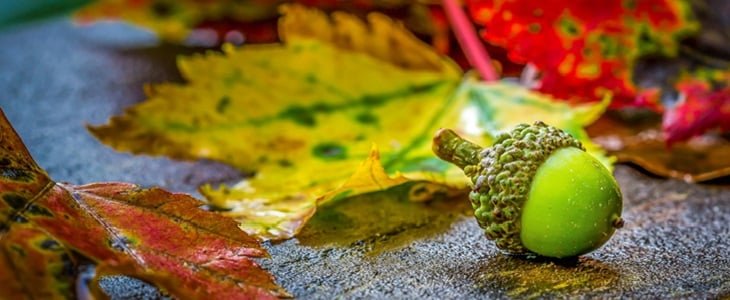
by Jay Watson, Co-Executive Director, New Jersey Conservation Foundation
If you missed the annual Big Tree Hunt put on by the New Jersey Forest Service this spring, the mammoth specimen you thought might be a contender is worth keeping an eye on.
The event challenges New Jerseyans to find enormous trees; this year, a 100-foot red oak in Bergen County took the top prize. But Joseph C. Bennett, the Forest Service’s Big and Heritage Tree Coordinator, maintains a tip sheet year round. “Anybody can add to it, anytime,” he said.
Inviting the public to help keep tabs on the gentle giants is not just a gimmick to get people to pay attention. It’s a way to help protect this state we’re in from the scourge of climate change.
“Not everybody knows it,” Bennett said. “But the bigger the tree, the bigger the environmental benefits.” Larger trees often have up to 600 times the atmospheric advantages of smaller trees. The Forest Service bases its evaluations on circumference, height, and average crown.
White oaks, the species found most frequently on the list of 700 trees that comprise the Forest Service’s Big Tree Registry, are not the massive sequoias or redwoods of the West (though Bennett knows of one sequoia in New Jersey, at a church in Burlington County). But what they lack in comparative size, they make up for in contributions to New Jersey’s ecosystem. They capture more carbon than smaller trees, they reduce stormwater runoff and soil erosion, and they filter our surface and ground water systems. When speaking of oaks, Doug Tallamy, author of “The Nature of Oaks” has said they are especially giving: “These large, long-lived trees support more life forms than any other trees in North America. And they’re magnificent.” In addition to white oaks, black walnut, red oak, and sycamore also get huge here and are frequently found on the registry, which includes trees on both private and public property.
Most of the trees nominated for the registry are statement makers. But a few stand out to Bennett, who calls himself “the big tree guy” and is often found surveying contenders this time of year, before the leaves fall off. “We have a supersized bald cypress in Salem that’s 27 feet around,” he said. The biggest tree in the state, a sycamore, stands in Hope. Cork trees are not only big, they are sometimes funny looking. One he surveyed at Duke Farms in Hillsborough “had branches all over the place and looked like an alien creature.”
The mightiness of big trees does not guarantee their survival. In 2019, a white oak in Salem Township known as the Salem Oak, 500 years old and more than 100 feet tall, fell victim to heart rot, a fungal disease. Another tree with ties to the past and batches of admirers, the Mercer Oak, fell in 2000 at Princeton Battlefield State Park. People were so connected to the 300-year-old specimen in the center of an open historic battlefield that they mourned and wept over its demise.
Bennett, who took on his current role in 2016, has since been working to expand the search for trees of note. In addition to the Big Tree Registry, he tallies trees of historical significance, or heritage trees. While he didn’t anticipate the Salem Oak loss, he had already started preparing for it. A year earlier, he and a colleague pieced together a big tree propagation plan. “I collected 6,000 acorns from that tree,” he said. Some of those acorns are in the process of becoming trees. “We have special teams taking care of them. We’re hoping all these babies take off and wind up becoming enormous.”
While the Salem Oak seedlings grow, Bennett is floating new ways to get the public invested in the endurance of colossal trees. This month, “a lot of the big oaks will start bearing acorns. If people want to start collecting some seed so we can collect it and propagate it, we’re moving forward with a plan to do that.”
A nursery in Jackson will be the drop off point; stay tuned to the Forest Service’s website for dates. And keep the submissions coming, he urges: “People can always be on the lookout for big or heritage trees.” One might be right in your backyard. Awareness is often its own reward.
“Think of all the benefits these trees bring us,” Bennett said. And think of all of the history these trees have witnessed in this state we’re in.
To find out more about the New Jersey Forest Service’s Big Tree Hunt, and to nominate a tree, go to https://nj.gov/dep/parksandforests/bigtreehunt/.
For a snapshot of this year’s Big Tree Hunt winners, visit the Forest Service’s Facebook page:
To learn more about preserving New Jersey’s land and natural resources, visit the New Jersey Conservation Foundation website at https://www.njconservation.org or contact me at [email protected].







